A visual aid for readers of Aelita’s War (Post 1 of 2)
In Sparrow Squadron, Raven’s Shadow, and now the upcoming Wounded Falcon, my trilogy following Soviet fighter pilots in World War II, I’ve included glossaries of terms that may be unfamiliar to readers. Even so, some readers like visualizing the different vehicles and equipment they come across in the story. To help with that, I’ve put together a visual reference of various military equipment in use during the Great Patriotic War, also known as the Eastern Front of World War II. All of these entries appear in the novels, and I’ve included some brief notes that might be pertinent to their appearance in the story. If you want more more detailed definitions, you can check out the glossary here.
Don’t worry, I’ve made this spoiler free (okay, maybe a few, very minor, spoilers)!
You can skip ahead to Part 2, Weapons & Vehicles, here.
Part 1 – Aircraft
Soviet Fighters
Yakovlev Yak-1
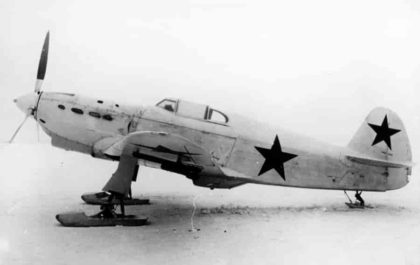
The Yak-1, its 1b variant, and the subsequent Yak-3, are all part of the same series of fighters that are flown by Aelya and her comrades throughout the war. The Yak-1 shown here is pretty much how they would have appeared as delivered to the 586th Fighter Aviation Regiment, with white camouflage scheme and the landing gear modified with skis.
Yakovlev Yak-3
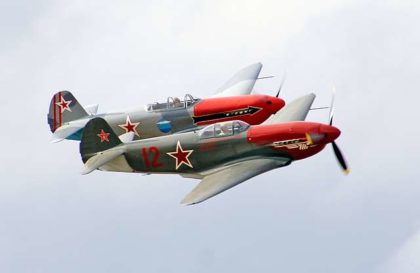
Many of the changes incorporated into the Yak-3 version of the Yak fighter that Aelya admired so much are visible in this photo: the streamlined construction, the “bubble” canopy with improved visibility, and metal fuselage construction.
Lavochkin La-5
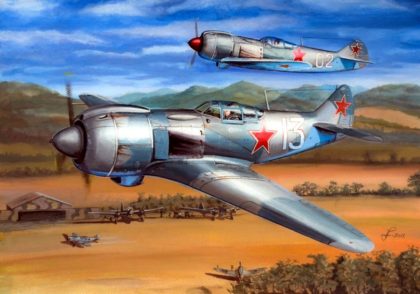
While the pilots of Sparrow Squadron fly Yaks, the other main fighter used by the Soviet Air Force was the more powerful and heavily-armed La-5. Sometimes, pilots of the two different fighters would develop a rivalry, each believing theirs was the best.
Polikarpov I-16
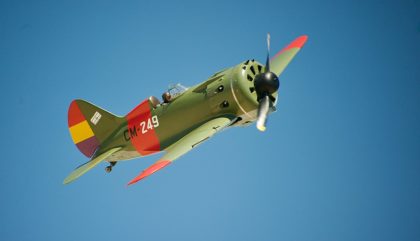
This was the Soviet Union’s primary fighter before the introduction of the Yak-1. The replica shown here has the markings of Republican Spain. A few years before World War II, the regimental commander, Red, fought in the Spanish Civil War as part of a Soviet contingent sent by Stalin, and would have flown a fighter much like this one.
Allied Fighters
P-51 Mustang
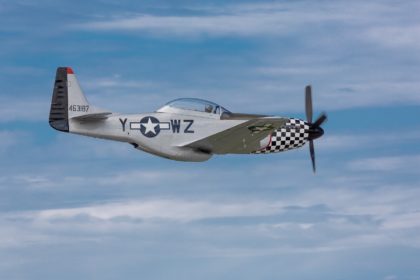
Due to its long range, this American fighter was used later in the war to escort bombing raids over Germany. As such, they became a frequent sight in the skies for both German civilians and the Soviet soldiers approaching Berlin.
German and Axis Fighters
Messerschmitt Bf 109
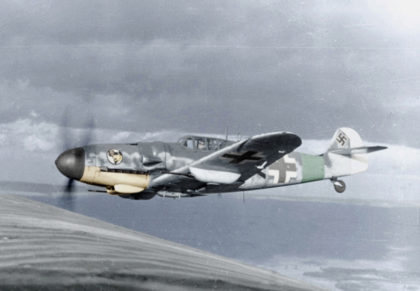
This German fighter was the primary opponent of Soviet fighter pilots throughout the war, thanks to the many upgrades that kept it current.
Focke-Wulf Fw 190
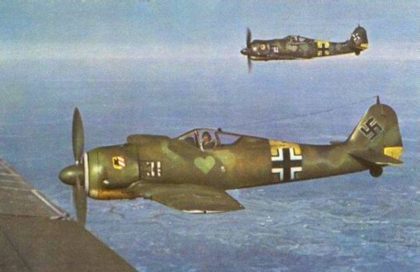
This versatile German fighter formed the bulk of fighter opposition to the Soviet Air Force on the northern sector of the Battle of Kursk. Pictured here are fighters from JG-54, with their distinctive green heart insignia.
Messerschmitt Bf 110
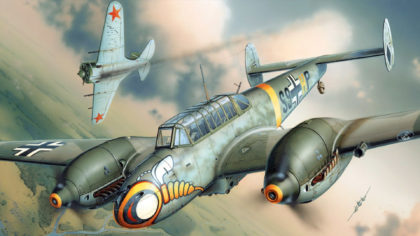
Originally envisioned as a heavy fighter, these were used in a ground attack role against the Soviet Union, including the Battle of Stalingrad, where Aelya encounters them. The plane pictured here has the hornet symbol of the Luftwaffe unit ZG-1 painted on its nose. Their arrival at Stalingrad stirred up some excitement among the pilots of 497th regiment.
IAR 80
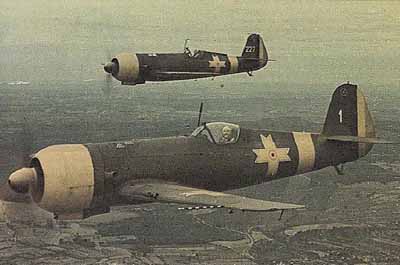
At one point during the Battle of Stalingrad, Roza is credited with shooting down a Romanian fighter, an IAR 80 like the one shown here. It serves as a reminder that the Soviet Union’s enemy was not monolithically German, but a coalition of multiple nationalities of varying degrees of willingness.
Soviet Bombers and Other Aircraft
Petlyakov Pe-2 “Peshka”
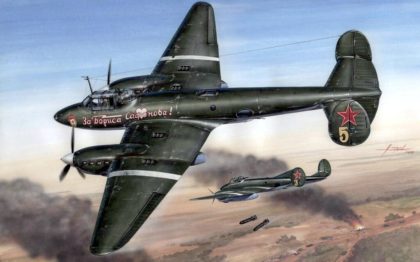
Escorting the Pe-2 dive bomber, also known as the “Peshka,” is one of Aelya’s frequent tasks.
It may surprise some readers that the Soviets had a significant naval air force. The Pe-2 depicted here is part of the Black Sea Fleet, and the writing on the side is a dedication to Boris Safonov, a Naval fighter ace.
Ilyushin IL-2 “Sturmovik”
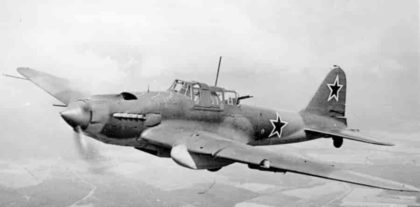
Aelya and her comrades probably disliked escorting the IL-2 more than any other mission. This iconic ground attack plane (Sturmovik literally means “assaulter”) flew low and slow at its targets, which meant its escorts had to do the same.
In this photo, it’s clear how vulnerable and exposed the rear gunner’s position is.
Douglas A-20 Boston / Havoc
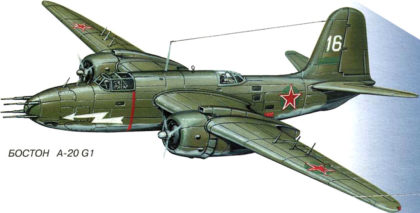
Aelya later meets a navigator who is part of the crew of a Boston bomber. This was one of a number of aircraft sent to Soviet Union by the USA as part of its lend-lease program. It served as both a medium bomber for the Soviet Air Force and a torpedo bomber for the Soviet Navy.
Polikarpov U-2 / Po-2
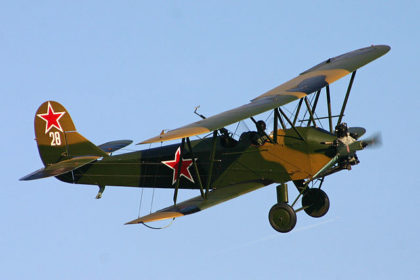
We first meet Aelya in the cockpit of one of these versatile biplanes, as she evaluates a student’s landing technique. She continued to fly one as she trained for Marina Raskova’s all-female Air Force regiments. Subsequently, this plane became famous as a night bomber used the Night Witches, the all-female 46th Guards Night Bomber Regiment, as they terrorized enemy soldiers under cover of darkness.
German Bombers and Other Aircraft
Heinkel He 111
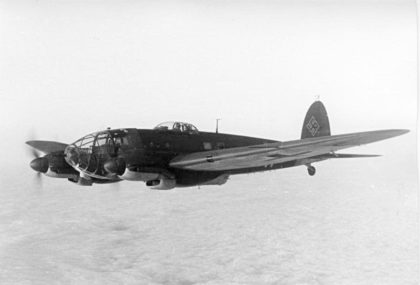
Soviet fighter pilots like Aelya were frequently charged with intercepting and shooting down German bombers. With its many defensive machine guns and sturdy construction, they could prove tricky targets to take down.
Junkers Ju 87 “Stuka”
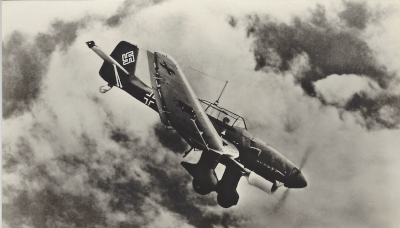
The iconic Stuka dive bomber was a frequent site over battlefields like Stalingrad and Kursk. In the latter battle, it developed a fearsome reputation as a “tank killer.” It was vulnerable to air attack, but Soviet fighters would need to get past their escorts first.
Junkers Ju 88
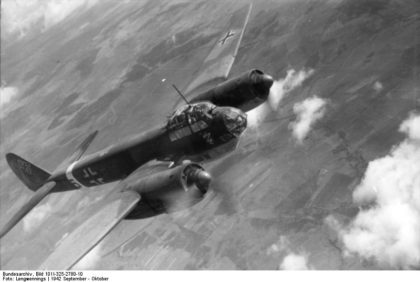
Another German medium bomber, the Ju 88 was fast and versatile. Like the Heinkel, it might have taken multiple attack runs to shoot down one, leading to shared “kills” among Soviet fighter pilots.
Henschel Hs 129
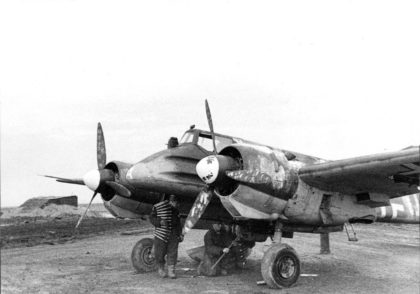
A relatively new ground attack plane by the time of the Battle of Kursk, the Hs 129 was seen in numbers later on in the Northern sector of that battle. Technicians are seen here loading the 37mm cannon under the fuselage, a characteristic of its intended use as a “tank killer”.
Focke-Wulf Fw 189 “Rama”
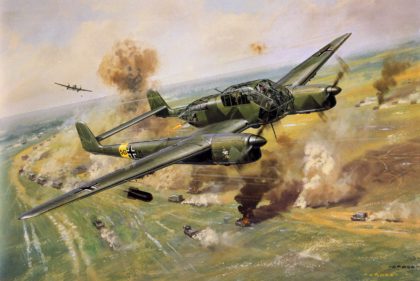
The boxy shape of this reconnaissance plane led to its nickname among Russian pilots, Rama meaning “windowframe.” This was among the highest value aerial targets for Soviet fighter pilots, who would be rewarded richly for shooting one down.
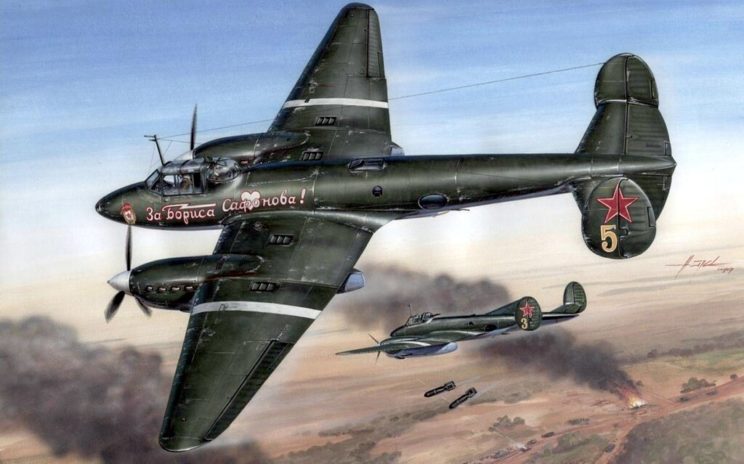
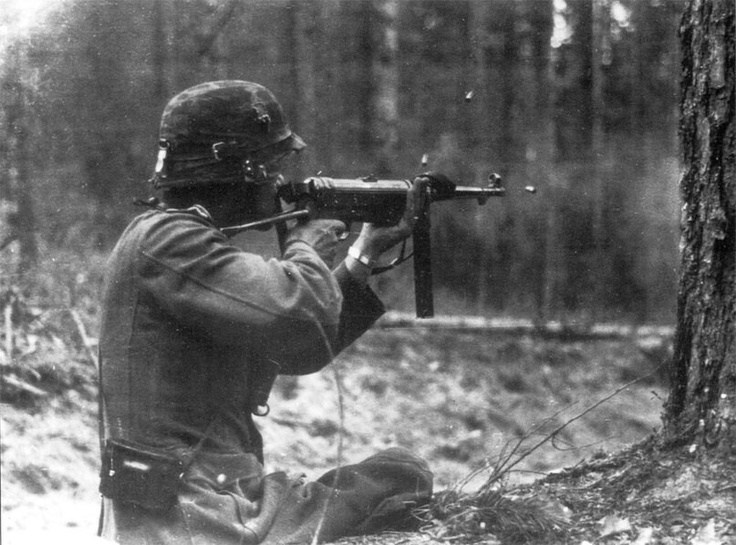

One thought on “Warplanes of the Great Patriotic War: A Visual Reference (No Spoilers!)”